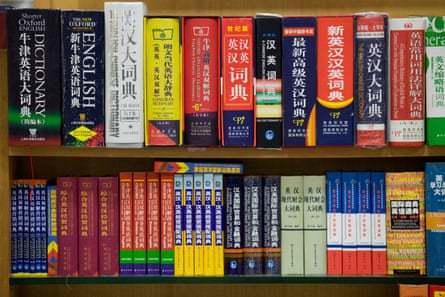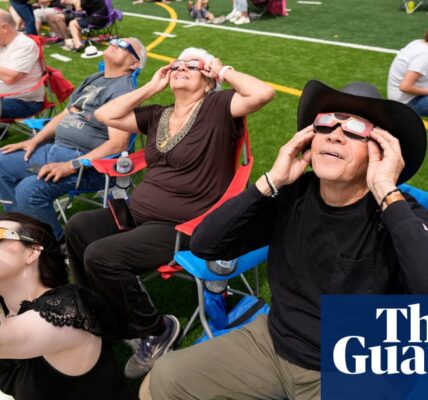A
At the core of linguistics lies a revolutionary belief: all languages hold equal value. This belief drives the work of the Endangered Language Alliance, a unique community of linguists, language advocates, multilingual individuals, and everyday citizens. Their purpose is to record endangered languages and promote linguistic variety, particularly in highly diverse urban areas around the globe.
All human societies have a universal and democratic aspect of language that is present in every group and no language is considered superior to others. Language provides a deeper understanding of human diversity compared to race or religion. The common map of the world’s nation-states pales in comparison to the lesser-known map of its 7,000 languages. Each language has its own unique features, such as discussing emotions, marine plants, or atomic structure, and some may excel in verb conjugation while others showcase complex syntax. Languages serve as numerous natural experiments, showcasing different perspectives and ways of life that are essential to understanding humanity.
Many people who speak Sanskrit, Latin, Greek, Hebrew, Arabic, Persian, Mandarin, English and other languages have claimed that their language is superior or more adaptable than the unwritten and unstandardized “dialects” they look down upon. However, from a linguistic perspective, no language spoken by a native speaker is inferior or broken. Most languages have always been spoken, with writing being a relatively recent development used by a select few in centralized societies. Writing is a learned skill that involves conscious coding, unlike the natural and universal human behaviors of speaking and signing.
The perception of one language being superior or inferior to another is not based on the languages themselves, but on the social power, class, or status of the speakers. All languages, whether spoken or signed natively, are fully capable of meeting the fundamental communicative needs of daily life and can create new words as needed. As linguist and polyglot Roman Jakobson once said, “Languages differ essentially in what they must convey and not in what they may convey.” In other words, any language can express any idea, but each language’s rules require speakers to highlight certain aspects of reality while leaving others unmarked, often without conscious awareness. This is what makes linguistics both fascinating and revealing.
While all languages may be considered equal in theory, it is often difficult to overcome the social and historical differences between their speakers. Currently, approximately half of all languages are only spoken by communities of 10,000 people or less. In fact, there are hundreds of languages that have only 10 or fewer speakers. On every continent, the median number of speakers for a language is less than 1,000, and in Australia, this number can be as low as 87.
Currently, these figures demonstrate significant risk, and even languages with a large number of speakers in the hundreds of thousands or a few million can be classified as vulnerable. In the past, smaller language communities were often quite stable, particularly among hunter-gatherer groups with fewer than 1,000 members. Similarly, many older sign languages, now facing critical endangerment, developed in what were known as deaf villages, where the prevalence of inherited deafness was higher compared to other areas, but still only around 2%. While there were also hearing individuals who could communicate through sign language in these villages, the main group of signers was typically only a few hundred at most.
Generally, the number of speakers or signers has been less important compared to the transmission of the language between generations. It has been observed that even a small language can remain strong for many years if parents, grandparents, and other caregivers continue to use it with children. For example, Gurr-Goni, an Aboriginal language from north-central Arnhem Land in Australia, has had only a few dozen speakers for generations. Despite not being a secluded group, Gurr-Goni speakers have managed to preserve their language in a multilingual environment where each native language is closely connected to specific ancestral lands and natural resources. However, this balance is quickly disappearing as colonial and national languages become dominant.
Why is linguistic diversity important? For a linguist, the reason is clear: languages that are not well-documented and are primarily spoken can teach us a lot about human communication. For example, without the Khoisan languages in southern Africa, we would not have known how clicks can be used extensively and expressively. Similarly, without Warao, a language spoken in Guyana, Venezuela, and Suriname, we would not have known that object-subject-verb is a common sentence structure. And without the Hmong-Mien languages in southeast Asia, we would not have known that a language can have as many as twelve tones.
However, languages also hold within them elements such as poetry, literature, humor, sayings, and expressions. They contain oral traditions, traditional knowledge about local and environmental matters, wisdom, and ways of life. Unfortunately, only a small portion of this can or will be translated into different languages.
If this is too abstract, think about the practical outcomes that could occur. Numerous studies have proven that there is no replacement for being educated in one’s native language and that preserving one’s language is crucial for overall physical and mental health, particularly for marginalized Indigenous and minority communities.
This is the main issue: languages are not simply fading away, but are actively being forced out of existence.
L
Similar to biodiversity, diversity in languages is most prevalent in isolated and challenging areas that were historically untouched by empires and countries: such as mountain ranges like the Himalayas and the Caucasus, archipelagoes like Indonesia and the Solomons, and areas that were once safe havens such as the Amazon, southern Mexico, Papua New Guinea, and certain regions of west and central Africa. However, these regions are now facing significant threats.
In his 1492 work Gramática Castellana, Antonio de Nebrija stated that language has always been intertwined with empire. He aimed to elevate the vernacular Castilian Spanish to the same level as Latin and other imperial languages, in preparation for European conquests around the world. While languages have always evolved and disappeared over time, the potential for linguistic imperialism has greatly expanded since Nebrija’s time. A small number of empires and nation states now dominate the entire globe, thanks to constant communication and education systems. Centuries of imperialism, capitalism, urbanization, environmental degradation, and nation building have led to a linguistic crisis worldwide. A select few hundred languages hold power and resources, while the remaining 95% struggle to survive.
Some languages, known as “killer languages”, hold a strong dominance over others. These include English, Spanish, Chinese, Nepali, and Brazilian Portuguese. Their power is expanding through political, economic, and cultural influences, impacting every aspect of society. While a few new languages may emerge, such as Light Warlpiri which evolved from a combination of English and Warlpiri in Australia’s Northern Territory, this is a rare occurrence.

Display the image in full screen mode.
In English-speaking countries such as the United States and Canada, the use of genocide, forced removal, illness, and discrimination have significantly changed the linguistic environment for Native peoples. Approximately half of the 300 distinct languages that were once spoken north of the Rio Grande have disappeared, and the majority of those that remain are no longer actively used and have less than 10 native speakers. Only a handful of the largest languages, such as Cherokee, Navajo, and Yup’ik, can be considered relatively safe for the next few decades, although they still face significant challenges. Similarly, most of the hundreds of Aboriginal languages once spoken in Australia are either extinct or only spoken by a small number of elderly individuals, with a few still being passed down to younger generations.
Many people believe that global communication would be simplified and improved if everyone spoke the dominant language of their region. However, simply sharing a common language does not guarantee unity, as seen in conflicts and divisions within English-speaking countries. Instead of embracing diversity, individuals often focus on minor differences such as accents, dialects, vocabulary, and intonation.
The usage of smaller languages and nonstandard varieties is continuously decreasing, as they are often only used in private and are quickly abandoned when spoken in public. This trend is now also taking place within households. Families all over the world are adopting English and other dominant languages, forsaking not only words but also rich traditions of body language, tone, facial expressions, conversational styles, and potentially even their culture and identity. Only when faced with strong political, economic, religious, or social influences do people refrain from passing down their native tongues to their children, but today these influences are pervasive. The disruption of this natural process has become commonplace.
O
English, fueled by business, popular culture, and the internet, has become the dominant language of our time. It holds more influence and flexibility than any political entity. For many English speakers, there is little they cannot accomplish or obtain in their own language. Regardless of power dynamics, English symbolizes linguistic privilege and is the preferred currency for communication. The global push to learn English is a significant event, resulting in a linguistic community of nearly 500 million native speakers and an additional 1 to 2 billion who speak it as a second language. These numbers continue to rise daily.
A common belief is that the world, or at least one’s own surroundings, is becoming more diverse. However, there is a growing dominance of monolingual individuals. The monolingual mindset, ingrained in most English-speaking Americans, hinders the recognition of the importance of other languages. A multilingual upbringing, now known to have significant cognitive benefits, can broaden one’s understanding of the world and provide a sense of linguistic and cultural awareness. Yet, for monolingual parents, achieving this requires significant commitment and resources.
What options are available for someone who only speaks one language? Each time a person speaks, they are expressing a set of inherited choices. It can be greatly advantageous to be a native speaker of the most widely used version of a dominant language. By representing the mainstream culture through language, one can effectively communicate with many people and sound impressive to most. It is uncommon for someone who only speaks a dominant language to need to learn another, and if they do, it is seen as a charming effort or a sign of open-mindedness and sophistication. Since reading and writing typically follow the dominant dialect, learning from books becomes easier. A person who speaks without an accent is automatically perceived as more intelligent or better educated based solely on their speech.
Unfortunately, individuals who are aware of their privilege based on their gender, race, class, or sexuality often fail to recognize their linguistic privilege. For those who speak English, Spanish, Mandarin, or Urdu, it may feel like second nature. However, the only way to combat monolingualism is to learn other languages and gain understanding from those who speak them. Perhaps there should be a specific form of therapy for monolingual individuals, where they are required to listen to a language they do not understand without any translation, but with complete patience.

Display the image in full screen mode.
As an academic linguist, this is a common challenge. When first interacting with someone who speaks a different language, there is a level of uncertainty about what the linguist actually does if they are not actively learning languages. However, even with limited knowledge of a language, a linguist can still analyze its sound system and decipher elements such as syllable shapes, vowel qualities, intonation patterns, and other characteristics that convey important information. Despite the overwhelming speed of unfamiliar speech, a linguist must resist the urge to immediately search for meaning and instead focus on understanding the structure of the language.
The entire area where spoken language occurs, from the glottis to the lips, is approximately five to six inches long. Over the course of evolution, the space that was originally used for eating and breathing gradually adapted for linguistic purposes, primarily in certain areas of articulation such as the lips, teeth, alveolar ridge, hard and soft palates, uvula, pharynx, and larynx. The tongue, often seen as a universal symbol of language, moves and flexes to create contact wherever possible. For those who use sign language, this occurs through hand movements. (For simplicity, terms like “speech” and “oral” will be used, but these concepts also apply to sign language.) Additionally, there are other methods of mimicking speech, such as whistled and drum languages, which utilize space in different ways.
To document and describe languages while there is still time ought to be the first task for a linguist. Yet a linguist’s moment of discovery is also almost always the moment of grasping a disappearance. For any outsider claiming to “discover” any human society or culture or language – that is, announcing the existence of some smaller group to the ruthlessly joined-up juggernaut sometimes known as “us” – is also arriving at, and bound up in, the moment of its destruction. The same forces that bring an outside linguist in are bringing everything else as well.
The effort to protect the world’s languages has gained momentum in recent years. In 1992, linguist Michael Krauss warned that the field of linguistics could potentially be responsible for the loss of 90% of the languages it is dedicated to studying. This statement sparked a renewed focus on language preservation, fueled by the growing movements for biodiversity and Indigenous rights. A group of linguists and language activists made a commitment to utilize new technologies in order to document and preserve as many endangered languages as possible. Ideally, native speakers are involved in this process, which is becoming more prevalent.
Documenting languages may seem like an obvious priority in the field of linguistics, but it goes against the focus of most linguists over the past 70 years. Rather than studying individual languages, they have been pursuing theoretical and computational questions, viewing themselves as outsiders trying to understand a single language known as “Earthling.” Their research has primarily focused on the largest and most dominant languages, which happen to be the ones they are most familiar with. However, this approach has not produced many universal findings and has limited the understanding of linguistic diversity on Earth. While theory is important, it is crucial that languages are documented on their own terms. This perspective reveals that the true extent of linguistic diversity on Earth is much greater and more fundamental than previously believed.
Every language should have a comprehensive dictionary, detailed grammar description, and a corpus of recorded texts to showcase the language in use. These materials should be easily accessible and archived for future generations, to the extent that speakers are willing. Larger languages have an abundance of resources available, such as Siri, speech recognition, automatic translation, and spellcheck, but smaller languages may not even have a dictionary or established writing system, relying solely on an elder for knowledge of the language.

Display the image in full screen mode.
Linguists cannot “preserve” languages, but they can assist in constructing archives or records. Every language has endless potential as long as it is still spoken or signed by individuals. A language cannot be captured completely in a dictionary. With a limited set of sounds, words, and grammatical rules, speakers are able to create an infinite number of expressions. There is no one definitive way that a community communicates, and there is no single type of data that should be preserved indefinitely. Language is constantly evolving.
Sadly, many language experts focus on negative and discouraging ideas about the “death” and “extinction” of languages, while Indigenous scholars assert that oppression is the true threat. They believe that reclaiming Indigenous languages is a means of liberation and healing from the effects of historical trauma. Like anthropology, linguistics has its own dark history. Protecting endangered languages means standing with the people who speak and use them, and ultimately, it is up to each community to decide if and how they want to continue using their language. Some have been fighting to preserve their language for centuries, while others may not be as concerned. Of course, there are always pressures and temptations to learn a dominant language, which may provide access, although limited, to resources from the dominant culture.
The idea of a traditional community falling apart may bring a sense of freedom to certain individuals, while others may view it as a catastrophe. Whether it is a matter of necessity or practicality, many people choose to give up their native language in favor of opportunities such as employment, education, relocation, or marriage. As a result, ties to ancestors, customs, lands, and cultural knowledge may be disregarded or become inaccessible in modern times.
“The idea that language and culture are inseparable is often seen as strong, but not entirely accurate, as there are instances where group identities remain even after a language is lost. No one should feel obligated to remain within a specific culture. What is important is that individuals and communities have meaningful choices in how they connect to their linguistic heritage and shape their linguistic paths. With humans being naturally capable of speaking multiple languages, preserving a less commonly used language does not prevent learning a more widely used one.”
T
Currently, there are numerous efforts to revive languages taking place globally, many of which have emerged in the recent decades. This has resulted in a vast amount of knowledge and expertise for others to utilize. The task at hand may seem extremely challenging, as even having one new speaker for a severely endangered language is considered a significant achievement that requires years of commitment. However, with the advancement of technology, individuals who speak the same language but are physically dispersed can now connect in online platforms. These platforms offer a variety of language learning opportunities and have potential for incorporating augmented reality and artificial intelligence in the future.
One major issue in language revival efforts is the lack of genuine financial, political, and technical assistance from the majority. Speakers of endangered languages rarely receive outside attention or understanding, and often face discrimination and ridicule. Any discussion or policies regarding language are usually focused on conflicts between a few dominant languages, rather than the overall decline of linguistic diversity.
For those who work to revive endangered languages, they may often feel a sense of hopelessness with every attempt to speak. Where can I use this language? Will anyone understand me? Can anyone correct me if I am wrong? Will I ever be able to think in this language? When there are very few others practicing it, matching words to their meanings can feel entirely arbitrary. However, it is only through repetition and practice that one can process and produce words quickly, and only then can they truly understand the unique experience of living in a specific language – much like an actor must memorize their lines before fully embodying their character. Trying to communicate with a language that is no longer widely used, and reviving an entire worldview that has almost disappeared, is a wonderful act of madness.
This passage is taken from Language City: The Struggle to Protect Endangered Native Languages, released by Grove Press UK on March 7th and can be purchased at guardianbookshop.co.uk.
Source: theguardian.com



